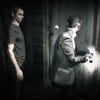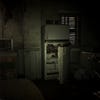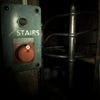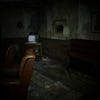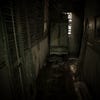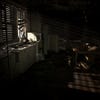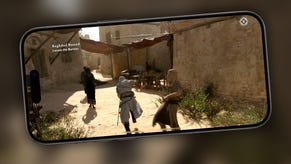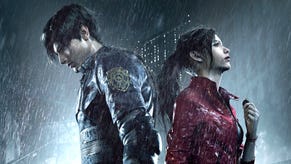Digital Foundry: Hands-on with Resident Evil 7: Beginning Hour
PT virus.
UPDATE 8/7/16 9:19: Capcom has been in touch to reassure us that the game runs at full 1080p: "Resident Evil 7 biohazard utilizes a locked Full HD resolution of 1920x1080 in all areas, with the exception of the found footage, which implements a lower resolution to portray an appropriately VHS-like quality for dramatic effect. The refresh rate is 60Hz throughout"
Original story: After the action-heavy excess that was Resident Evil 6, fans have been clamoring for the series to return to its survival horror roots. The Revelations titles filled the gap between main entries in the franchise, and many expected the seventh game to follow a similar blueprint - third person gameplay with a bigger focus on exploration and atmosphere than the last couple of titles in the series. But Resident Evil 7 takes the series in a brand new direction that's sure to polarise fans, swapping out the familiar third-person camera for first-person gameplay. It's a surprising change, and one that appears to be influenced by the developer's focus on delivering an experience that is fully playable in VR.
Set 20 years after Resident Evil 6, this latest instalment acts as both a sequel of sorts and a reboot. The emphasis here is firmly on immersing the player into the world, with combat taking a back seat in favour of exploration and some mild puzzle solving. The switch to the first-person viewpoint combined with the game's ambient use of lighting and environmental sound effects certainly creates a memorable impression, though not always for the right reasons. Wandering around a derelict house in disrepair, creaky floorboards, random noises, and fleeting ambient music rarely do enough to shock or surprise. The game really wants you to take in the surrounds and become immersed in the experience, but doesn't quite deliver enough to really provide solidify the connection.
Visually, the game pushes more of the right notes, with lighting and effects work creating a distinctive style that is closer to Konami's PT demo than past Resident Evil titles. Capcom's new RE Engine paints the environment in realistic shades, with authentic surface shaders adding a natural appearing to materials, while also targeting a 60fps update. Rusty metal work, dusty glass jars, and wooden beams very much look the part, and this is held together with a lighting model that illuminates the dark indoor environment sparingly. Small god rays shine through boarded up windows, while bloom effects creates a mild glow in areas where natural light sources enter the building.
However, there's little natural light in the boarded up house we're exploring, and the player's torch casts the primary light source that lifts the surroundings from the darkness. The lack of visibility is a key component in generating atmosphere, and for the most part it works well. Fleeting shadows cast in the distance and the falling of objects off household furniture certainly keep you alert when it's hard to see what could be lurking in the corner of the room. However, there's also a sense that the demo never really takes full advantage of these elements to deliver a real sense of tension or urgency, especially once it's clear that you are not alone in the house.
Post-processing is also used to establish a grimy aesthetic that looks like it is viewed from an old film camera. Chromatic aberration softens the image across the screen as red, greens, and blues separate along edges, while depth of field helps to establish focal points when the player examines items picked up from around the house.
Perhaps the best example of this is during a sequence where you play-out a segment from a video tape on an old CRT TV. Fake scanlines cover the image, chromatic aberration is stepped up a notch, while polygonal edges appear more pronounced, with visible jaggies. It's a look reminiscent of found footage crossed with a broken tube telly, and works well. That said, we're not too keen on the heavy use of chromatic aberration - perhaps a light touch of film grain would be a better choice.
With VR a primary focus point of the gameplay experience, Resident Evil 7 is designed around targeting a 60fps update, and for the most part the demo hits this frame-rate with ease. Barring a few dropped frames across our run of play, the game performs smoothly and the experience remains consistent from start to finish - the minor dips that do crop up don't stand out when playing, and never intrude on the gameplay.
The push for high frame-rates has little impact on raw image quality. Native resolution appears to come in just below the 1080p mark, and may be dynamic in nature. Pixel counts never fall to the point where the sub-native presentation is noticeable while playing, with the use of post-process effects adding some smoothness to the overall image. Of course, it's worth bearing in mind that the demo is just a small taster of the experience Capcom is planning. Right now it's not clear how combat fits into the gameplay, and it's likely that more action-heavy moments with multiple zombies/enemies on screen could see both performance and pixel counts drop.
For now this small sampler is but a glimpse of what Resident Evil 7 might offer, and the direction is one likely to divide long term fans. While the move to more horror-centric gameplay is welcome, the massive change in style is unlike any traditional Resident Evil game, and not exactly what most fans had in mind. We have mixed impressions of the demo, although the gameplay seems like a great fit for PlayStation VR, and it will be interesting to see exactly how Capcom take advantage of the technology to deliver a very different instalment for their most popular franchise. If they can make the experience more disturbing like the infamous Kitchen demo, there's certainly room to carve out a very different, but satisfying game based around Resident Evil lore.
If you want to read about the teaser's many secrets, check out our Resident Evil 7 demo endings guide.


